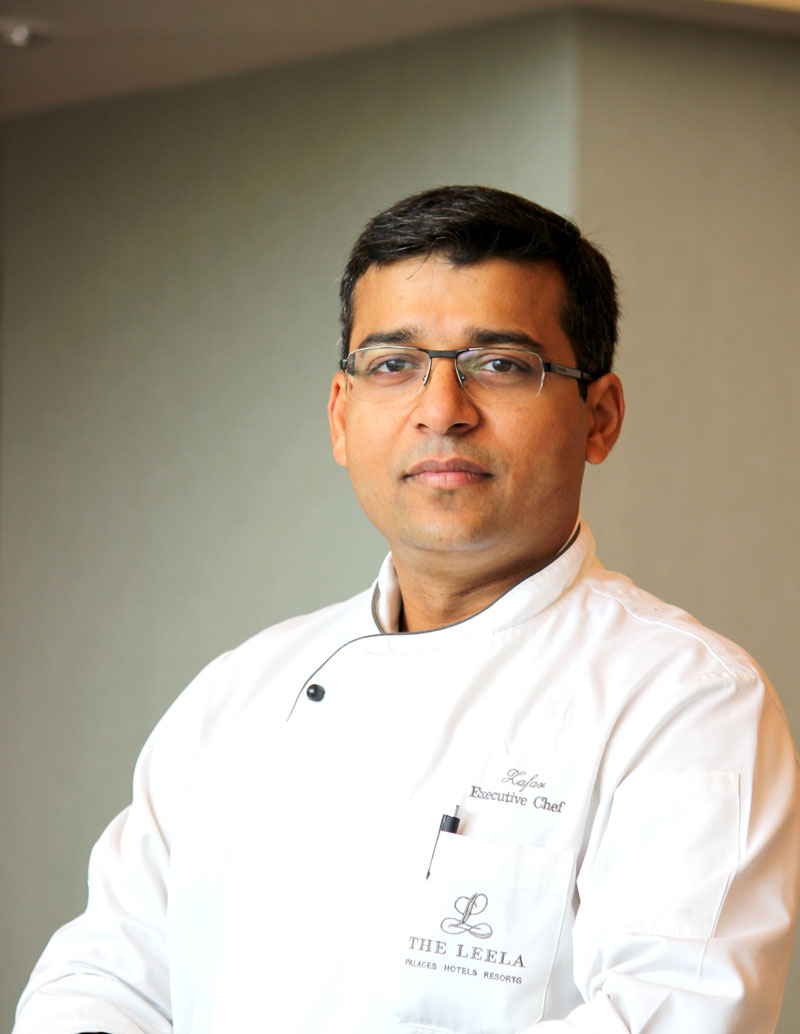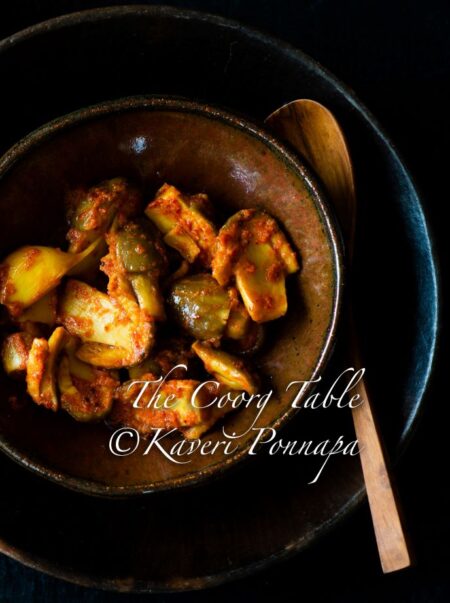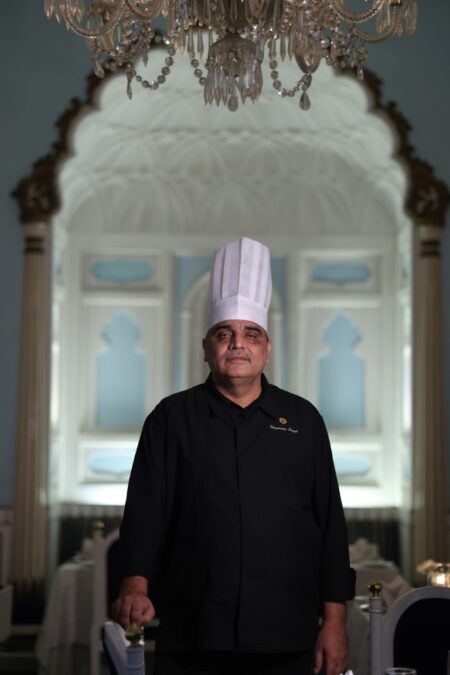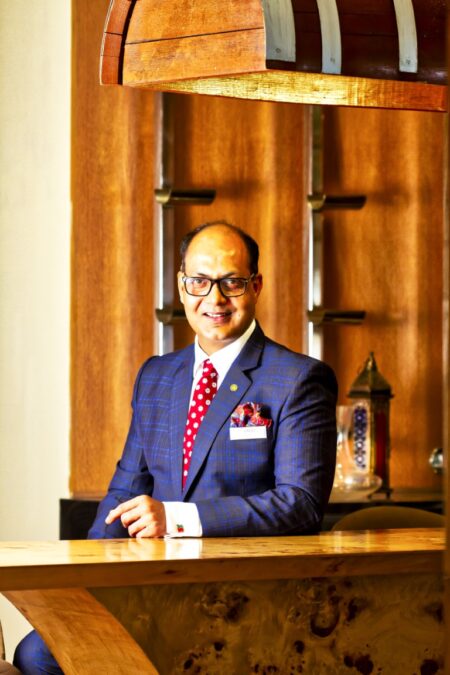A luxury dining experience crafted by a renowned chef can prompt us to take a plane ride to a restaurant halfway across the globe. Sometimes the experience lies much nearer home. Chef Mir Zafar Ali, Executive Chef at The Leela Palace Hotel, Bengaluru, is a man immersed in creating menus of exceptional quality. Over his 17- year culinary journey, trained in European cuisine and as a pastry chef, he has used an unerring palate to present meals that are beautifully crafted, memorable for both intensity of flavour and refined artistry. Pan-seared Chilean Sea Bass from his kitchen arrives with an exquisitely delicate crust. An airy truffle soufflé holds its shape for the longest possible time, allowing you to savour every morsel. Concentrated essences of mushroom and lobster bisque feature on the same menu as an elevated Shepherd’s Pie, all harmonized by smooth wine pairings.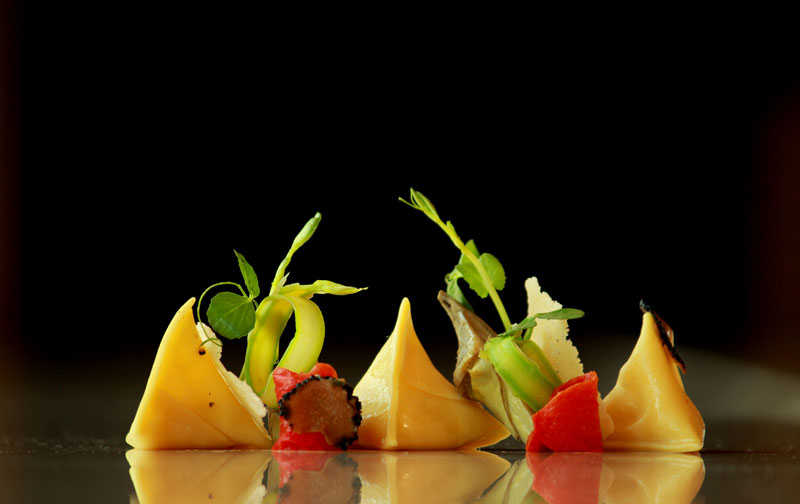
Kaveri Ponnapa- Le Cirque is a 40-year-old concept. How much of the menu that you present is classic Le Cirque, and how much of it is innovation? What is the creative philosophy that guides that innovation? Le Cirque: The Signature Classics of Le Cirque would comprise of at least 50% of the menu, while the rest is innovation –using classic techniques, modern presentations and the season’s best, in terms of ingredients available. The philosophy applied is to come up with dishes that are uncomplicated, bringing out the right flavors; dishes that are exciting, relying on ingredients in their prime
KP- Your dishes stand out first as being visually compelling in the best, most uncontrived but striking way, and at the same time being aroma and flavour-intense –a combination that immediately engages one’s senses. What would you describe as being the main technique/techniques that you apply to achieve this? LC: I believe that the more we involve different senses, the more elevated the dining experience. Even before we start to eat, the mind tends to create a perception of how the dish would taste, this is stimulated by visual appeal and the aroma from the food.
Every ingredient has essential oils, soluble flavors, and aroma that are released during cooking. So, most of my dishes are cooked in closed vessels, or sealed dishes, to retain natural compositions, and also to reduce the cooking time.
For me, the most important part of my food is the flavour, seasoning, and temperature, which when presented perfectly, appeals to all the senses, and in turn gives an experience to the guest, rather than just a meal. My approach begins essentially with what I choose to use. Getting the right ingredients is one of the most important priorities for me. Seasoning and application of the right cooking techniques is again crucial to how I wish the dish to taste, smell and look. I believe that anything which goes on to a plate as a garnish should always complement the flavours of the main dish.
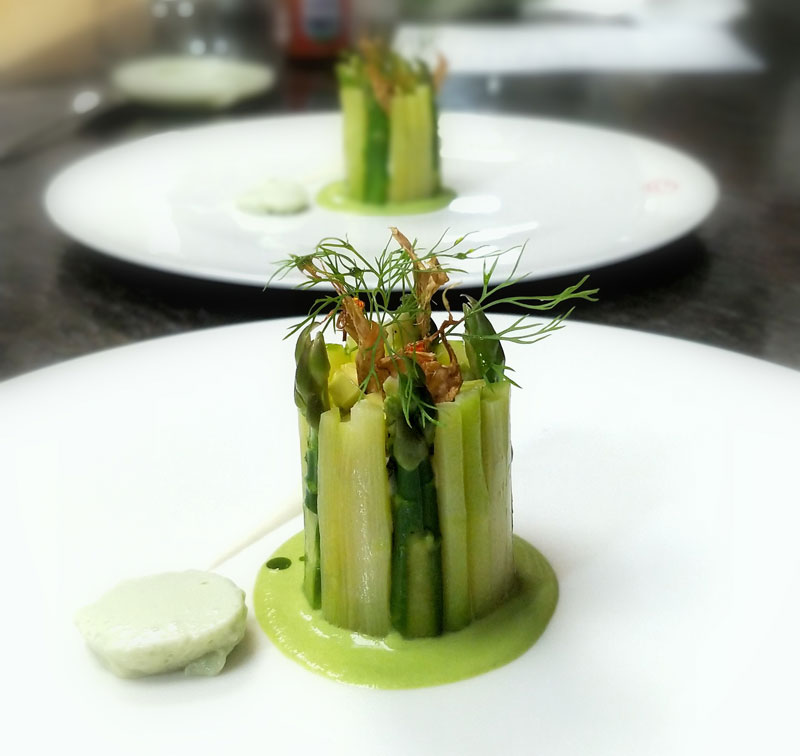
KP- There is a particular intricacy coupled with a pared down simplicity in your plated presentations that actually create intense visual experiences –for instance, just a tracery of coral-like fennel fronds with a dish of blue swimmer crab, and a minuscule sculpture of amber coloured Tobiko is enough to evoke the ocean and all its possibilities. Or a Truffle and Egg Soufflé that looks like something ephemeral that one stumbles across on a damp forest floor. What informs these creations? Art? Literature? Other culinary inspirations? LC: I believe a dish can speak for itself and explain the philosophy behind why it has been prepared or presented in a particular manner. Most of my preparations have been inspired and planned for the occasion, and my own understanding of what the guest would like his dining experience to be. The contribution of every element on a plated dish is as important as the main ingredient itself. Each of these elements, harmonizing with the main ingredient both in terms of flavor and presentation is what makes the dish complete. Every dish is a combination of inspiration, creative thought and a representation of my philosophy of food.
KP- You now handle multiple cuisines with ease- Western, Indian and Japanese- which is reflected in the quality of the restaurants that you cook in and oversee: how did these transitions take place? Was there formal training, or did you follow the path of learning on the job? LC: The basic principles of cooking do not change much with cuisines, they remain relatively the same. In any cuisine, an understanding of the ingredients, and the flavours they impart to the dish is essential. Another aspect which is very important is understanding the culture, and cooking styles. Once there is confidence in understanding all these elements, the learning cycle of various cuisines becomes much easier. In my case, I have worked for chefs of different nationalities. This instantly changes your perception of food. Your own outlook changes from time to time, and I guess your passion motivates you to learn the intricacies of every cuisine that interests you. I have managed to gain experience in European, Indian, Japanese cuisines, and as a pastry chef. There is still more out there that I want to learn!
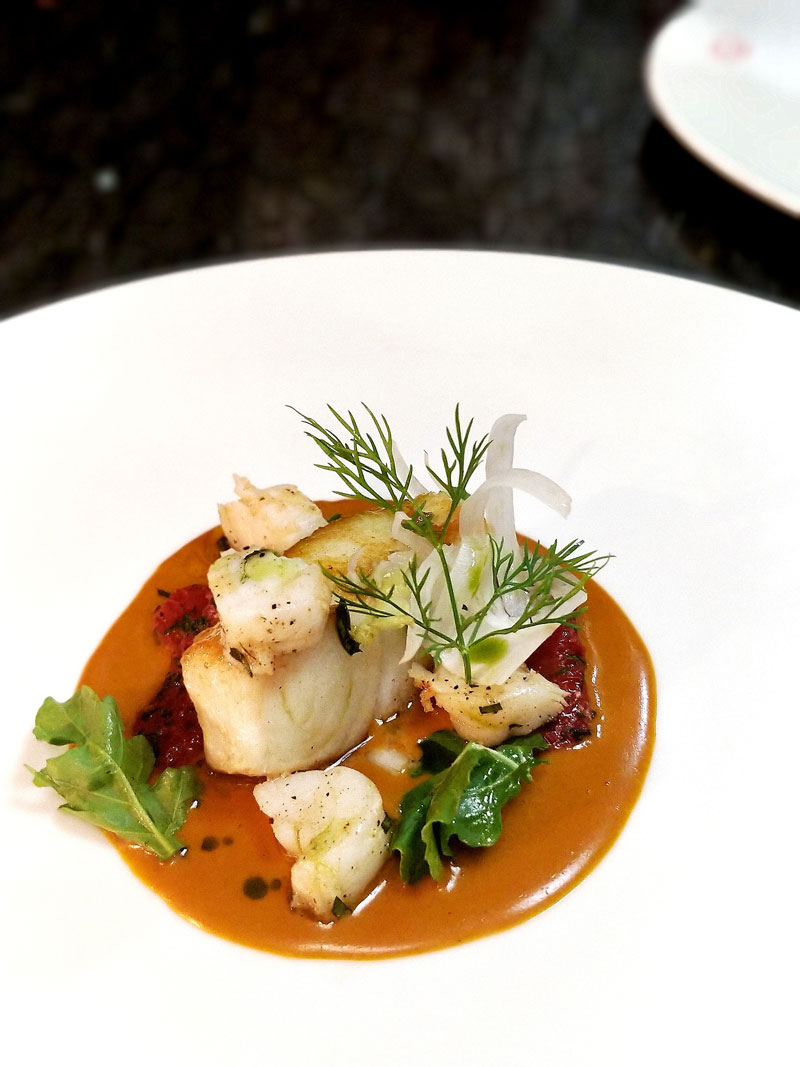
KP- The wine pairings for a nine-course menu de dégustation were remarkably simple- just two wines, one white and the other a red –but they carried the courses through to the end. Please tell us a little about your approach to pairing wine and food. LC: As wines have complex, multiple notes it become essential to understand the highlights of each of the wines, and then creating food around it, adjusting the flavour of each of these dishes to complement the wine. My approach to pairing food and wine has always been to balance the notes of the wine with not just the main ingredient, but all the elements in the dish. The flow of the menu should be composed in a way that there is gradual progression in flavour and complexity, both in the wine and food, to create harmony amongst them.
KP- You would have created many outstanding and memorable dishes over the years. Tell is about one of your favourite creations and your idea of the wine pairing that you would choose to make it a perfect match. LC: Slow cooking has always fascinated me. It brings about a harmony amongst the many ingredients in the pot. One of my favourite cuts of meat to braise is lamb ribs. The fat-meat ration makes it ideal for braising, served with pearl barley and roasted vegetables. I would serve it with a full-bodied Marchesi di Barolo 2007. The strong tannins, great acidity and distinctive nose would elevate the slow-braised lamb.
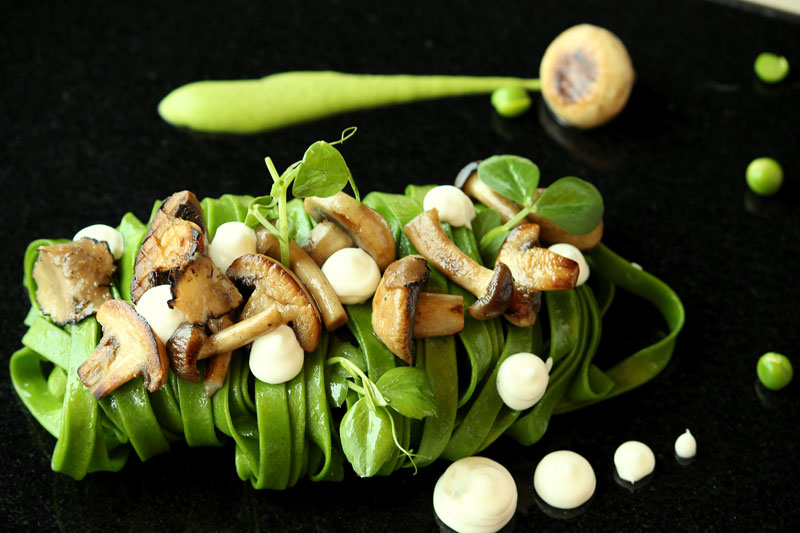
KP- There is an extensive wine list offered at Le Cirque Signature. What wines would you personally choose that you would love to create special dishes to pair with? LC: Some of my favourites from the Le Cirque Signature Wine list would include:
Tignanello– A Sangiovese aged in Barriques, has fresh and vibrant flavours with supple, balanced tannins.
Barolo Marchesi de Barolo– Red wine from the Piedmont region of Italy, full bodied, with soft tannins and aromas of spices, making it perfect for stuffed pastas and red meat entrées
Gaja Ca Marcanda– Red Wine from Toscana, Italy, fruity flavours perfect for reductions and to serve with fish, apart from red meats and pastas.
Gaja Rossj Bass– White wine from the Piedmont region of Italy. Elegant, with citrus aromas, well-suited for seared scallops and Halibut.
Laroche Chablis
KP- The boundaries between cuisines and culinary traditions are more fluid now than they have ever been. Chefs and restaurants source ingredients from all over the world, techniques are more easily shared and acquired, knowledge travels very widely–what would you say makes your style of cooking and presentation your own? LC: Imaginations have no boundaries, but imaginations also need something to feed on, which comes from our personal experiences. From what we have seen and experienced, more ideas are born, bringing in creative variations. Visiting places, and meeting different people has given me a lot to think about, and come up with innovative ideas and presentations. My experiences have taught me a lot, and while applying them to my preparations, I ensure that the flavors, seasonings and serving temperatures get the top priority, and all elements of the dish to harmonize with the main ingredient. Combined with carefully-thought out portion sizes and simplicity –I would say this is my personal culinary philosophy, which shapes every dish I create.
This article was published in Sommelier India Magazine, Volume14:Issue 1, January-March 2018
Image Credits:

